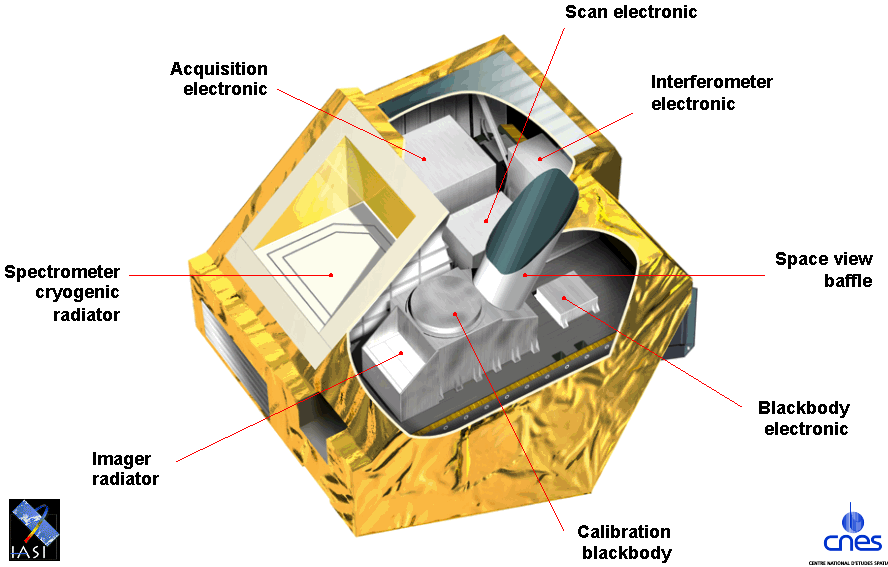IASI instrument
The Infrared Atmospheric Sounding Interferometer (IASI) is a key instrument onboard the Metop series of satellites, operated by the European Organisation for the Exploitation of Meteorological Satellites (EUMETSAT).
IASI operates in the infrared spectrum and is capable of providing detailed and precise measurements that are crucial for weather forecasting and climate research. By analyzing the infrared radiation emitted by the Earth's surface and atmosphere, IASI helps in determining the vertical profiles of temperature and humidity from the Earth's surface up through the troposphere and lower stratosphere. These profiles are essential for improving the accuracy of weather prediction models.
In addition to its role in weather forecasting, IASI plays a significant part in monitoring the atmospheric composition. It detects and quantifies a wide range of trace gases, including greenhouse gases like carbon dioxide and methane, as well as ozone, CO, SO2, NH3 and other pollutants. This capability is vital for studying and understanding atmospheric chemistry, air quality, and climate change.
Deployed on the Metop-A, Metop-B, and Metop-C satellites, IASI has been providing continuous and comprehensive global atmospheric observations since its first launch in 2006. The data from IASI is widely used by meteorologists, climatologists, and atmospheric scientists, offering invaluable insights into the dynamics of the Earth's atmosphere and contributing to various environmental monitoring efforts.
IASI factsheet
- Spectral range: 3.7-15.5 µm
- Swath: ±1066 km
- Sampling at nadir: 18 km
- Earth view pixels per scan: two rows of 60 pixels each
- Dimensions: 1.2 m x 1.1 m x 1.3 m
- Weight: 236 kg
- Data rate: 1.5 Mbit/s

